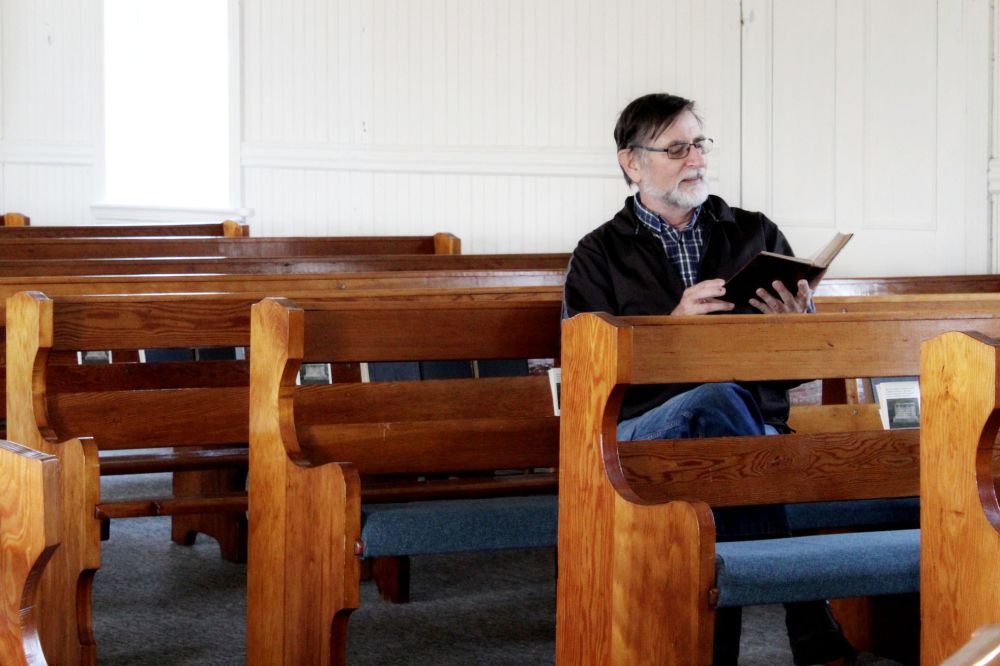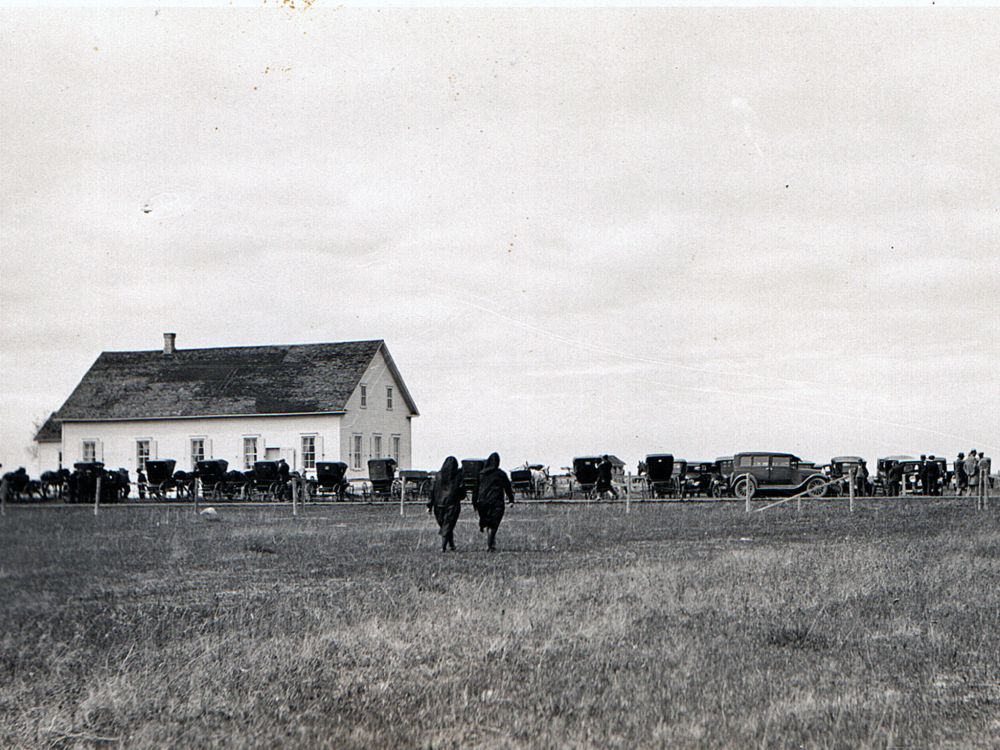Mennonite migration of 1919 remembered
Advertisement
Hey there, time traveller!
This article was published 11/06/2019 (2339 days ago), so information in it may no longer be current.
With this year marking 100 years since the Winnipeg General Strike, there’s a lot of attention on what life was like for working-class Canadians in the pivotal years following the First World War.
But 1919 was also a significant year for a smaller group of Canadians: Mennonites.
On May 26, local Mennonite historian Ernest Braun spoke to a 75-person congregation at Chortitz Heritage Church in Randolph about how the Canadian government’s broken promise led 1,500 Mennonites to immigrate to Canada.

It all started with a visit in Russia from John Lowe, the secretary for Canada’s Department of Agriculture.
It was 1873, and Braun said things weren’t looking good for Russian Mennonites at the time.
The Russian government was growing tired of granting military exemptions to the pacifist farmers, and they decided life would be easier if they could just be like everyone else.
It was the start of Russification, an assimilation movement that forced immigrants to give up their own culture and language and replace them with Russian values. So when a Canadian secretary visited Russia with promises of religious freedom, thousands of Mennonites leapt at the opportunity to leave.
Braun said Lowe wrote up a 15-point agreement, part of which guaranteed the Mennonite immigrants would have control over their schools by law.
There was just one problem: Lowe couldn’t actually make that promise.
Under the British North America Act, provinces had control over schools, not the federal government. So when Lowe brought the agreement back to his superiors, they made him change the document.
Lowe complied and stroked out the words “by law” from the document, which meant the provinces weren’t legally obliged to let the Mennonites control any part of their schools.
Braun said Lowe never told the immigrants about the change.
The Russian Mennonites unknowingly settled into Canada starting in 1874. Braun said it was largest single period of immigration in Manitoba history.
Randolph, known as Chortitz, was the cultural hub for Mennonites living in the RM of Hanover.
And for a while, Braun said, things seemed okay. Mennonites were pretty self-sufficient; living in farming colonies, teaching children the Bible in schools, and exclusively speaking German.
But in 1916, the province of Manitoba passed the Manitoba Public Schools Act, which required every child to attend government-run schools. That meant eliminating religious instruction, speaking English exclusively, and following the government-made curriculum.
The province opened ten new schools on Apr. 8, 1919, and they were going to force immigrant children to attend them. If parents refused, they were given heavy fines and could even be sent to jail.
Many of the Mennonites resorted to legal action. They lost their case to two different levels of court before being rejected by the Privy Council.

Braun said it didn’t help that this was right after the First World War, and Canadian citizens, many of whom had just endured five grueling years of war, weren’t too sympathetic towards a group of German-speaking pacifists.
Not to mention Manitobans had the Winnipeg General Strike to worry about. Since the Mennonites were farmers, they weren’t affected by the poor conditions factory workers were facing.
So, with their problems falling on deaf ears, many Mennonites decided to emigrate.
Some unsuccessfully tried moving to Quebec, which had independent minority rights. When that didn’t work, they scattered, relocating to Brazil, Mexico and Paraguay. Braun said it was the largest emigration since the Acadian Expulsion from Nova Scotia in 1760.
Braun’s father, Jacob Braun, was among those to move. Jacob’s parents reluctantly immigrated to Paraguay, but couldn’t get property.
After waiting around in a refugee camp for three years, the Brauns, dejected, returned to Canada. They had lost their life fortune, spending every last dime they had on the return trip.
Braun said his grandfather never really recovered.
“The driving life force he had never really came back,” the 71-year-old said.
Now, Braun wonders how effective the choice to leave Canada was.
“The migration was traumatic for my family,” he said. “It was traumatic for a lot of people.”
Some families did stick it out in Paraguay and were able to build successful colonies, many of which remain to this day.
Braun said he wants the 1919 mass migration to serve as a reminder to value religious freedom and protect vulnerable people in society.
